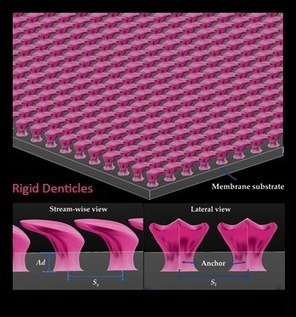"It only takes a brief journey down a B road during the summer months to end up with a car looking like it has driven through a plague of insects. Amplify this effect by the power of a space shuttle wingspan and bug remnants can result in a significant increase in drag. The problem is that when an insect hits an aircraft at speed its mass ruptures and undergoes some chemical changes which make it stickier. Flying through a swarm of insects leads to an accumulation of debris on the leading edge of wings which creates drag and increases fuel consumption. NASA researchers, in collaboration with engineers at Langley and Boeing, studied the microscopically-rough texture of lotus leaves in order to understand how the surface is so effective at repelling dirt, dust and water."
Via Miguel Prazeres



 Your new post is loading...
Your new post is loading...









